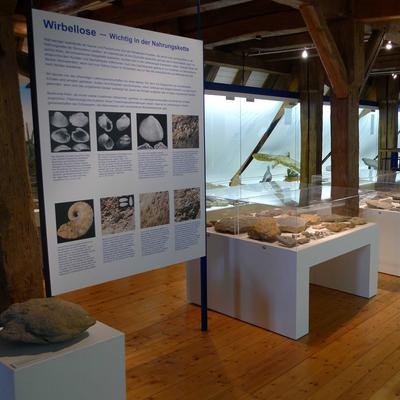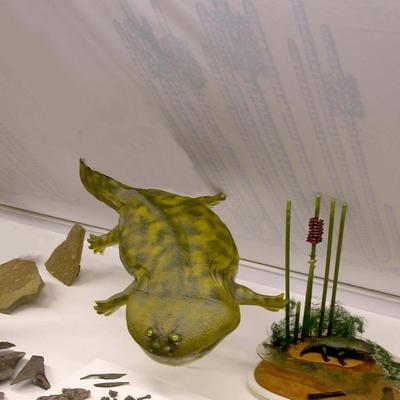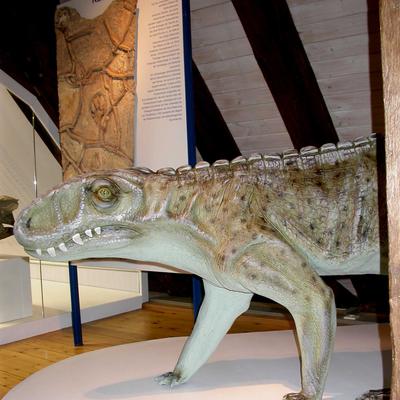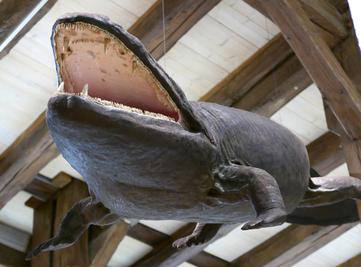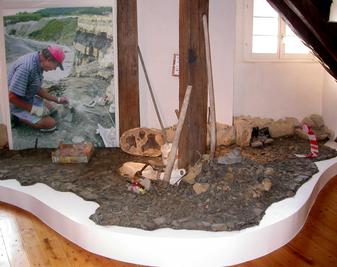Hardly any other museum presents an equally detailed Lower Keuper exhibition as the Muschelkalk Museum. This is due to Werner Kugler from Crailsheim who donated his excellent collection of temnospondyl amphibians, reptiles, and other fossils to the Alberti Foundation. In eight large display cabinets and some additional show cases spectacular fossils are to be seen. Among these are skulls and bones of Mastodonsaurus, the largest amphibian in earth history, the strange looking plagiosaurs, the terrestrial crocodile Batrachotomus, toothplates of huge lungfish, bivalves and other invertebrate fossils, moreover ferns, horsetails and other floral elements from the Lettenkeuper swamps. A model of an excavation site built of original rock material gives an idea of how all the fossils were digged out and prepared. The Werner Kugler Gallery also shows a geological model and reconstructions of river networks of the past as well as two glass cases dedicated to prominent scientists, the Tübingen professors Georg Wagner and Adolf Seilacher.
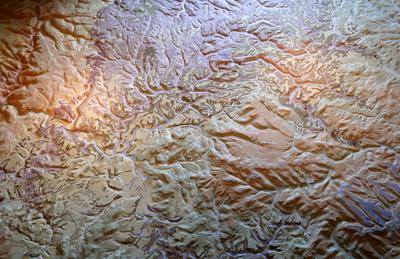
The 3-d and true-to-scale geological model of Southwest Germany between Upper Rhine Graben and the escarpment of the Swabian Alb Jurassic chain gives a realistic view of the cuesta landscape structure. In the central position is the uplifted Muschelkalk of the Franconian Shield, which is surrounded by the Swabian and Franconian Keuper Hills in geological synclinal position.

